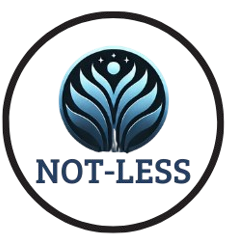I wasn’t looking for breathwork.
I wasn’t searching for some transformational healing method or the next must-try trend in wellness. My shelves already sag under the weight of personal development books. I’ve downloaded the meditation apps. I’ve filled journals with so many reflections and regrets that I could wallpaper my entire house. So, no—I didn’t go looking for breathwork.
But it found me anyway.
It was one of those in-the-background moments. I was half-listening to the Achieve Your Goals podcast while showering when something made me stop. A woman named Samantha Skelly was sharing how breathwork helped her release emotional pain—real, heavy, lived-in pain. The kind that lives in the body long after the moment has passed.
She first experienced it in Bali after reading Elizabeth Gilbert’s Eat, Pray, Love. (Relatable.) She spoke about the kind of hurt that doesn’t have language, the type that can’t always be solved by talk therapy or another self-help worksheet.
I didn’t roll my eyes. I listened.
Because I’ve known that kind of pain too.
What Is Breathwork, Really?
Let’s start here: breathwork is intentional, conscious breathing. But it’s more than the familiar “inhale for four, exhale for eight” kind of thing. It’s not just yoga breath. It’s not mindfulness in the way most people use that word.
Skelly explained that after about eight minutes of sustained conscious breathing, the amygdala—the brain’s fear center—begins to quiet. Your survival responses dial down. You get direct access to your emotional body, and the stuff you’ve been holding? It finally has a way out.
That hit me hard. Because how do you talk through 20 years of wanting to be a mother… and not becoming one?
How do you explain to a therapist the heartbreak of never buying the baby dishes you’ve long admired from Villeroy & Boch, because you didn’t want to tempt hope?
Sometimes, words aren’t enough.
But breath is still there. Breath is always there.
Me, the Lawyer, and the Woo-Woo
I’m not exactly new to healing work, but I’m not fully “woo” either—maybe one-fourth. I like affirmations. I believe in journaling. I’ve read The Law of Attraction. But I also like data. I like neuroscience. I like understanding why something works.
And here’s the thing: breathwork does work. And science backs it up.
Breathwork activates the parasympathetic nervous system—your body’s built-in calm-down switch. It regulates the vagus nerve, which connects your brain and body, playing a key role in how we respond to trauma, stress, and even digestion. Studies link breathwork to reduced symptoms of PTSD, anxiety, depression, and even chronic pain.
It’s not magic. It’s physiology. It’s healing through your own body’s design.
The First Time I Tried Breathwork
I found a guided session inside the Miracle Morning app, a collaboration between Skelly and Hal Elrod. I followed along.
I didn’t cry. I didn’t have a spiritual breakthrough. I didn’t levitate or feel “cleansed.” Honestly, it felt uncomfortable—fast breathing can feel that way at first. I got a little dizzy. But I also felt… lighter.
Later that day, I noticed something small but undeniable:
- I wasn’t clenching my jaw
- My shoulders had softened
- The usual tightness in my chest had lifted
I wasn’t holding my grief like a stone slab anymore. And that was enough to try again.
Why Breathwork Might Be a Tool for You, Too
If you’ve been walking around holding your breath—literally or metaphorically—this could be a gentle place to begin.
You don’t need a guru or a retreat. You don’t need candles or a crystal collection. You don’t even need to “believe” in it.
You just need:
- A quiet space
- Five to ten minutes
- Curiosity

A few breathwork resources I’ve used and liked:
- Pause Breathwork App (by Samantha Skelly)
- Insight Timer – search “breathwork for grief,” “letting go,” or “Skelly”
- Spotify – guided breathwork sessions that are straightforward and non-spiritual
And if all of that feels like too much? Just sit. Place one hand on your heart. Inhale slowly. Exhale even slower. Repeat ten times. That counts, too.
Final Thoughts: There Is No “Fix”—Only Space
Breathwork won’t erase what did not happen. It won’t rewrite the past.
But it can help you stay present. It can help you meet yourself in the tenderness of this moment, without judgment. Without pressure to “move on.” Without pretending you’re okay when you’re not.
Sometimes we don’t need solutions. We just need space.
Breathwork is one small, strange, beautiful way to give yourself that space.
Feeling skeptical? That’s okay. Try one 5-minute guided breathwork session this week. Then grab a pen and journal whatever comes up—emotionally or physically. No pressure. No expectations. Just notice.
And if you do try it, I’d love to hear your experience. Comment below or message me privately. Sometimes healing starts with just one breath—and one honest conversation.

